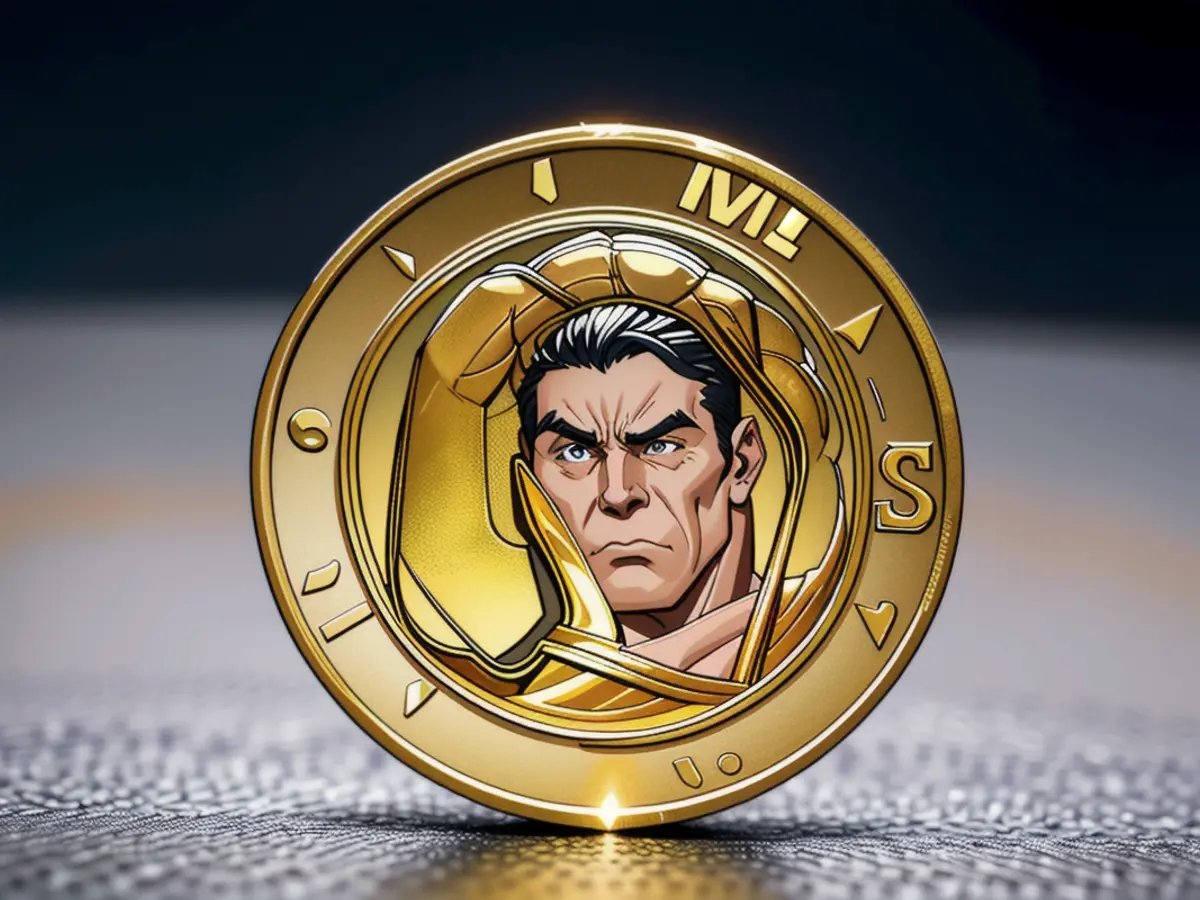Understanding the Cyclical Nature of Blockchain-Related Shares
In 2024, blockchain technology and its associated cryptocurrencies, particularly Bitcoin (BTC), garnered significant attention due to concerns surrounding federal elections and an escalating Bitcoin value. Cryptocurrencies, being assets with limited supplies, undergo cyclical price swings as a result of fluctuations in supply and demand. Businesses that utilize blockchain technology and cryptocurrencies may also show cyclical patterns, although they have distinct revenue cycles compared to crypto assets like Bitcoin.
Listed below are some companies that integrate blockchain technology or possess connections to cryptocurrencies. The following analysis explores the cyclical nature of their business models, along with potential optimal investment opportunities.
Cyclical companies and reasons
Why they are cyclical
The cyclical nature of companies depends on whether they sell physical goods or offer stable and predictable subscriptions, such as software-as-a-service (SaaS) providers. Companies that sell physical products may depend on consumer demand or innovation-driven upgrades throughout hardware cycles. Sectors like airlines, automakers, and oil and energy firms experience longer cycles driven by the health of the overall economy. Conversely, tech companies that sell SaaS products exhibit minimal correlation with market cycles.
Four cyclical blockchain stocks
Blockchain companies subject to hardware cycles
Nvidia and AMD: The tech hardware cycle
During the 2017 Bitcoin boom, Nvidia and AMD stock prices experienced rapid growth due to their GPU production, which includes graphics processing units used for cutting-edge video game graphics and complex tasks like cloud computing, AI, and cryptocurrency mining. As the demand for Bitcoin mining waned, sales and stocks for both companies plummeted. The rise of AI and data centers fueled a post-2023 boom, with Nvidia's stock nearly quadrupling and AMD's stock doubling by late 2024.
Block: The consumer spending cycle
Block (formerly Square) is a payment processor closely tied to the health of its merchants, with consumer spending being a key indicator of the U.S. economy's health. During the COVID-19 pandemic, many retail sectors were negatively impacted, while others experienced growth. Block's performance closely mirrored this general trend, with online merchants' growth helping to mitigate potential revenue losses.
Block also generated income via its Cash App, allowing Bitcoin trading. Since Bitcoin's value is volatile, the cryptocurrency cycle could impact Square's performance. However, Block announced plans to increase its involvement in Bitcoin mining and incorporate blockchain technology into various retail operations, potentially solidifying the tech's role within the industry.
DocuSign: The SaaS supercycle
DocuSign is a blockchain stock that offers SaaS products, exhibiting little to no correlation with market cycles. Its growth has been primarily driven by the SaaS boom and steady subscriber base. Although the company's stock can be volatile due to factors like subscriber numbers and revenues, it remains less affected by market cycles compared to hardware-driven blockchain stocks.
Paraphrased text:
During 2024, the focus on blockchain technology and related cryptocurrencies, such as Bitcoin (BTC), intensified due to concerns surrounding federal elections and a substantial increase in Bitcoin's value. The volatility of cryptocurrencies, being limited-supplied assets, results in cyclical price swings caused by supply and demand fluctuations. Businesses that utilize blockchain technology and cryptocurrencies may also display cyclical revenue patterns, although these cycles differ from those of crypto assets like Bitcoin.
Here are companies integrated with blockchain technology or connected to cryptocurrencies, along with explanations of how their business models are cyclical (or not) and potential optimal investment times.
Cyclical companies and rationales
Why they are cyclical
Companies' cyclical nature depends on whether they market physical goods or sell stable and predictable subscriptions, such as SaaS providers. Companies that sell physical products rely on consumer demand or innovation-driven upgrades when it comes to hardware cycles. Industry sectors like airlines, automakers, and oil and energy firms endure longer cycles influenced by the health of the global economy. Conversely, tech companies selling SaaS products exhibit minimal correlation with market cycles.
Four cyclical blockchain stocks
Blockchain companies influenced by hardware cycles
Nvidia and AMD: The tech hardware cycle
During the 2017 Bitcoin boom, Nvidia and AMD saw their stock prices skyrocket due to their GPU production, which includes graphics processing units used for advanced video game graphics and intricate tasks like cloud computing, AI, and cryptocurrency mining. As the demand for Bitcoin mining decreased, sales and stocks for both companies plummeted. The growth of AI and data centers fueled a post-2023 boom, with Nvidia's stock exploding by nearly 400% and AMD's stock doubling by late 2024.
Block: The consumer spending cycle

Block, formerly known as Square, is a payment processor closely tied to its merchant's performance, with consumer spending being a vital economic indicator in the United States. During the COVID-19 pandemic, many retail sectors endured significant challenges, while others experienced growth. Block's performance mirrored this general trend, with online merchants contributing to offsetting potential revenue losses.
Block also generates income through its Cash App, allowing Bitcoin trading, making the cryptocurrency cycle a potential factor impacting Square's success. However, Block announced plans to expand its involvement in Bitcoin mining and incorporate blockchain technology into various retail operations, potentially establishing blockchain tech as an essential feature within the industry.
DocuSign: The SaaS supercycle
DocuSign is a blockchain stock offering SaaS solutions, with minimal correlation to market cycles. Its growth has primarily been driven by the SaaS growth surge and a steady customer base. Although DocuSign's stock can be volatile due to factors like subscriber numbers and revenues, it remains less impacted by market cycles compared to hardware-driven blockchain stocks.
Digital transformation was one of the top sectors to invest in during the 2010s, and its popularity continues in the 2020s. The world is moving towards digitalization, and subscription-based services are helping businesses and individuals make the transition. DocuSign (DOCU -4.42%) is a platform that facilitates electronic signatures and agreement processes, using blockchain technology to verify signer identity and contract evidence.
Supercycle
A prolonged period of expansion, usually driven by growing demand for products and services. As subscription models go, SaaS companies like DocuSign are as cyclical-free as it gets. SaaS businesses generate steady and predictable revenues, and many are disrupting industry norms and growing rapidly as a result. However, as SaaS businesses mature, they may become more cyclical, depending on retaining subscribers and fending off competition from similar services. (The mobile phone industry has followed a similar trajectory in recent years.)
But for now, any cyclicality for a blockchain stock like DocuSign mainly originates from the stock itself. If growth exceeds investor expectations, then the share price can surge. If growth falls short of expectations, then the opposite occurs. Between August 2021 and August 2022, DocuSign stock fell over 80% in value as growth slowed, but share prices were on the rise again by late 2024.
Related investing topics
Introduction to Investing in Blockchain Stocks
A brief overview of blockchain stocks and how to invest in them.
15 Useful Applications for Blockchain Technology
What is blockchain beneficial for? Let us count the applications.
Top Bank Stocks for 2024
Banks may seem complicated, but their money-making strategies are straightforward.
Uses for Blockchain in the Financial Services Industry
Financial institutions are relying on blockchain for the next major tech advancement.
When to Buy
When to buy cyclical blockchain stocks
As with all market timing, consistently predicting the market's bottom or top is nearly impossible. However, buying stock incrementally over time -- perhaps by accumulating shares of a company in smaller batches over a few months or quarters -- can help alleviate the pressure to time the market perfectly.
But at what point should an investor begin accumulating a cyclical crypto or blockchain stock? Assuming a positive long-term outlook for the company, buying shares during a cyclical downturn is preferable to waiting for the slump to end.
For example, after Nvidia's cyclical peak in September 2018, the stock plummeted near half its value (dropping to less than $150 from a peak of almost $300) before rebounding to $800 in 2020. After a 4-for-1 stock split in mid-2021 and a 10-for-1 split in mid-2022, Nvidia reached a split-adjusted price of almost $1,100. By late 2024, Nvidia surpassed Apple (AAPL 1.61%) as the world's most valuable company.
Similar patterns can be observed in other business sectors. When analyzing crypto and blockchain stocks, consider buying shares in batches during cyclical downturns and scaling back on purchases once the slump gives way to renewed demand.
In the context of the text discussing the cyclical nature of companies that integrate blockchain technology or possess connections to cryptocurrencies, here are two sentences that contain the words ['money', 'investing', 'finance']:
- As investors, it's essential to consider the cyclical nature of these blockchain stocks to maximize financial returns and make informed investment decisions.
- By understanding the cyclical patterns of these companies, investors can strategically allocate their money and time to optimally invest in these cyclical blockchain stocks and generate significant returns.








